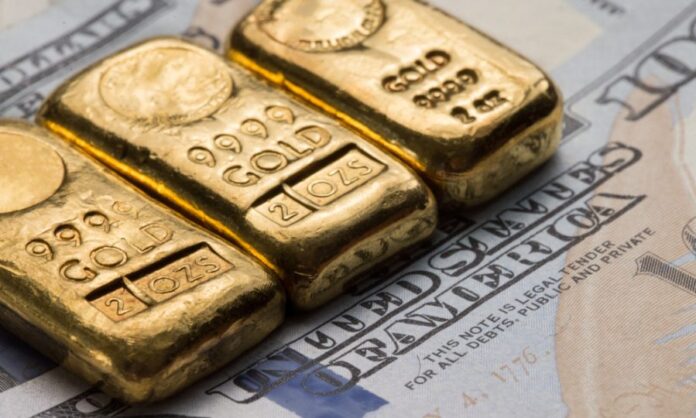Gold has stood the test of time as a reliable investment, transcending generations. Inflation, a gradual process, highlights the need for a resilient asset like gold. Furthermore, the current consolidation in gold prices presents a favourable buying opportunity. In this article, we explore the enduring appeal of gold, the nature of inflation, and why now is an ideal time to consider gold as a part of one’s investment strategy. By Colin Shah, MD, Kama Jewelry.
We all invest our surplus money to make money. Investment returns may vary depending on the asset classes in which investments are made. A given asset loses value if there is significant inflation in that country. What if I told you that there is one asset class or investment that is fundamentally inflation-resistant? And that too not just recently or even centuries ago. Unrest in politics or policy, growth in the supply of money and a decline in its value, inflation, and a rise in the price of basic and essential commodities.
For instance, in 193 AD, civil conflicts, plagues, and barbarian invasions decimated the Roman Empire. Its leaders turned to gradually lowering the silver content of the denarius, the nation’s official coin, to address these difficulties. It has gradually changed from a currency that was once almost entirely comprised of silver to a bronze coin with only a thin silver plating. The merchants raised their prices as a result of realising that the new denarii were less valuable than the old ones over time. However, they weren’t to blame for the inflation. Inflation is not a phenomenon that appeared overnight; it developed over time as a result of numerous parties’ actions. As always, the expanding money supply was strictly the government’s fault.
This inflation made the majority of people poor, but those who held their wealth in gold were resistant to it. Although centuries have passed, the economic principles that prevailed under the Roman Empire still hold true today. Delegates from the 44 allies met in Bretton Woods, New Hampshire, at the close of World War II. It was decided that the US dollar would then act as the world’s reserve currency. The rest of the countries, which were ravaged by the war and had very little gold reserves left, would back their currencies with dollars while the US would back its currency with gold. Although the connection between the various national currencies and gold was tenuous and indirect, it nonetheless remained. The Global Economy saw massive development due to the acknowledgement provided post the battle for engagement in rebuilding.
However, the US government adopted a different strategy in the 1950s and 1960s. The federal government has continually increased its expenditures for the wars in Korea and Vietnam as well as for the expansion of social programs like Medicare, Medicaid, food stamps, and social security. The Federal Reserve was compelled to issue significantly more dollars than the gold it needed to support these programs in order to pay for them.
This has effectively devalued the dollar, much like the Romans did with their silver denarius. As a result, US inflation began to gradually increase, rising from an average of 1% in the early 1960s to 4.5% towards the end of the Lyndon Johnson administration. In 1969, when Richard Nixon became President, he had no choice except to violate the Bretton Woods pact. He gave his infamous televised speech on 15th August, 1971, in which he stopped the dollar’s ability to be converted into gold.
Due to this, there is no longer any connection between our money and physical gold. Few people are aware that, on the same anniversary, he also enacted a 90-day salary and price freeze, in the same manner as Emperor Diocletian 1,670 years prior. Unsurprisingly, inflation was unaffected in the long run by this. After a brief lull, it began to climb once more, peaking at over 14% in 1980 and no less than 12% in 1974. Once more, individuals with the foresight to preserve their wealth in gold were shielded from inflation.
Gold’s price increased from around $40 per ounce to $800 per ounce in the 1970s, making up for the sharp drop in the value of the dollar for its owners. The “fiat world” in which we currently reside. Nothing exists to support our currencies, and they are no longer even printed on paper. They can be easily made at the touch of a button and are primarily digital entries on some bank servers. Inflation has resulted from the recent decade’s rapid increase in the money supply, as many members of the sound money community had expected. Even the most ardent Keynesian economist must now admit this truth.
The fact that the price of gold has not increased significantly in the only unexpected aspect of the current financial situation. It reached an all-time high of $2,075 in the summer of 2020, but since then it has been in a protracted period of consolidation. Recently, amid the backdrop of the escalating banking crisis in the US, it temporarily reached this level once more. However, it has yet to leave its trading range and resume moving up. Many investors in precious metals were perplexed by this.
Why, in the face of such persistently high inflation, has gold’s performance been so disappointing? First things first, let us remind you that this consolidation follows a stunning 70% increase in the price of the metal, which occurred between 2018 and 2020. It appears that the price of gold has foreseen inflation and has already reacted to it. Therefore, it makes sense for it to consolidate in order to get ready for any upcoming moves.
In addition, the author would like to emphasise that while the price of gold has been flat in dollars, it has been rising to record levels in other currencies. In terms of euros, British pounds, Japanese yen, Canadian dollars, and Australian dollars, the price of gold is at an all-time high. The Federal Reserve’s aggressive tightening effort has contributed to the US dollar’s excellent performance in 2022. However, as Jerome Powell has indicated, this tightening cycle is coming to an end.
We believe that the current crisis in the banking industry will prevent rates from rising much further and that the dollar’s influence on the price of gold will cease. In times of crisis and excessive inflation, history has repeatedly shown that precious metals perform remarkably well, and we are certain that this time will be no different.
There is cause for concern that the inflation we are currently experiencing is far from over and will stick around for years to come, just like it did in the 1970s. The general public do not appear to be aware of this and continue to have complete confidence in the Federal Reserve’s capacity to reduce inflation to pre-pandemic levels. Sadly, I don’t hold this opinion. I believe that recent price stability for gold should be viewed as a purchasing opportunity.
Disclaimer: This information has been collected through secondary research and TJM Media Pvt Ltd. is not responsible for any errors in the same.



























